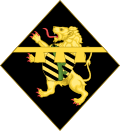Philippe of Belgium
Philippe or Filip[lower-alpha 1] (Dutch pronunciation: [ˈfi.lɪp], French pronunciation: [filip], Dutch: Filip Leopold Lodewijk Maria, French: Philippe Léopold Louis Marie, German: Philipp Leopold Ludwig Maria; born 15 April 1960) is King of the Belgians, having ascended the throne on 21 July 2013, following his father's abdication. He is the eldest child of King Albert II, whom he succeeded upon Albert's abdication for health reasons, and Queen Paola. He married Jonkvrouw Mathilde d'Udekem d'Acoz (now Queen Mathilde), with whom he has four children. King Philippe's elder daughter, Princess Elisabeth, is first in the line of succession.
| Philippe | |||||
|---|---|---|---|---|---|
.jpg) The King celebrating Belgian National Day, 2018 | |||||
| King of the Belgians | |||||
| Reign | 21 July 2013 – present | ||||
| Predecessor | Albert II | ||||
| Heir apparent | Elisabeth | ||||
| Prime Ministers | Elio Di Rupo Charles Michel Sophie Wilmès | ||||
| Born | 15 April 1960 Belvédère Castle, Laeken, Brussels, Belgium | ||||
| Spouse | Jonkvrouw Mathilde d'Udekem d'Acoz
( m. 1999) | ||||
| Issue Detail | |||||
| |||||
| House | Belgium (Saxe-Coburg-Gotha branch) | ||||
| Father | Albert II of Belgium | ||||
| Mother | Paola Ruffo di Calabria | ||||
| Religion | Roman Catholicism | ||||
 |
|
HM King Albert II
|
|
Early life
Philippe was born on 15 April 1960 during the reign of his uncle, King Baudouin of Belgium. His father, Prince Albert, Prince of Liège (later King Albert II) was the second son of King Leopold III of Belgium and a younger brother of Baudouin. His mother, Paola, Princess of Liège (later Queen Paola), is a daughter of Italian aristocrat Fulco VIII, Prince Ruffo di Calabria, 6th Duke of Guardia Lombarda. His mother descends from the French House of La Fayette, and the king is a descendant of Gilbert du Motier, marquis de Lafayette and Marie Adrienne Françoise de Noailles.
He was born at the Belvédère Castle in Laeken north of Brussels. He was baptised one month later at the church of Saint Jacques-sur-Coudenberg in Brussels on 17 May,[1] and named Philippe after his great-great-grandfather Prince Philippe, Count of Flanders. His godparents were his paternal grandfather, King Leopold III, and his maternal grandmother, Donna Luisa, Princess Ruffo di Calabria.[2]
Education
From 1978 to 1981, Philippe was educated at the Belgian Royal Military Academy in the 118th "Promotion Toutes Armes". On 26 September 1980, he was appointed second lieutenant and took the officer's oath.[3]
He continued his education at Trinity College, Oxford and he attended graduate school at Stanford University, California, where he graduated in 1985 with an MA degree in political science.[3] He obtained his fighter pilot's wings and his certificates as a parachutist and a commando. In 1989, he attended a series of special sessions at the Royal Higher Defence Institute. The same year, he was promoted to colonel.
In 1993 King Baudouin died in Spain, Albert became the new king, and Philippe became the new heir apparent, titled Duke of Brabant.
On 25 March 2001, the prince was appointed to the rank of major-general in the Land Component and the Air Component and to the rank of rear-admiral in the Naval Component.[3]
Marriage
Philippe married Mathilde d'Udekem d'Acoz, daughter of a Walloon count of a Belgian noble family and female line descendant of Polish noble families such as the princes Sapieha and counts Komorowski, on 4 December 1999 in Brussels, in a civil ceremony at the Brussels Town Hall and a religious ceremony at the Cathedral of Saint Michel and Saint Gudule in Brussels. They have four children:
- Princess Elisabeth, Duchess of Brabant, born 25 October 2001
- Prince Gabriel, born 20 August 2003
- Prince Emmanuel, born 4 October 2005
- Princess Eléonore, born 16 April 2008
Foreign trade
On 6 August 1993, the government named Philippe as honorary chairman of the Belgian Foreign Trade Board (BFTB). He succeeded his father, who had been honorary chairman of the BFTB since 1962. On 3 May 2003, Philippe was appointed honorary chairman of the board of the Foreign Trade Agency, replacing the BFTB.[4]
In this capacity, Philippe has headed more than 60 economic missions.[5][6] Upon his accession as seventh King of the Belgians, this role was taken over by his sister Princess Astrid.
Accession
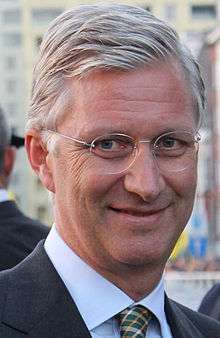
King Albert II announced on 3 July 2013 that he would abdicate in favour of Philippe on 21 July 2013.[7] Approximately one hour after King Albert II's abdication, Prince Philippe was sworn in as King of the Belgians.[8] His eldest child, Princess Elisabeth became his heir apparent and is expected to become Belgium's first queen regnant.
Reign
Philippe played a role in forming a coalition government after the 2014 Belgian federal election.[9] Political meetings with the King were moved from the Palace of Laeken to the Royal Palace of Brussels.[9] In May 2019, Philippe met with Vlaams Belang President Tom Van Grieken, the first time the party had received a royal audience.[9][10]
In 2020 Philippe announced regret for the "acts of violence and cruelty" committed in Belgian Congo.[9]
Military ranks
.jpg)
- 26 September 1980 – 21 March 1983:
- 21 March 1983 – 1 December 1989:

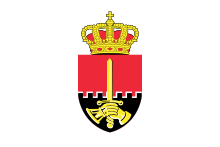
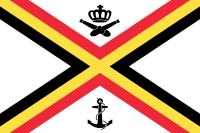
- 1 December 1989 – 5 April 2001:



- 5 April 2001 – 25 March 2010:
- 15 March 2010 – 21 July 2013:
- Since 21 July 2013 (oath as King):
 |
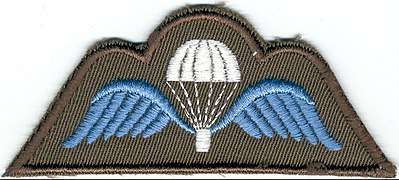 |
||
| Royal Military Academy | Pilot wings | Parachutist badge | Commando badge |
| 123rd TAW (1978–1981) | 9 July 1982 | 28 October 1982 | 17 December 1982 |
|---|
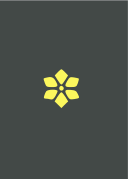 |
 |
 |
 |
 |
 | |||||
| 1980 | 1983 | 1989 | 2001 | 2010 | 2013 |
|---|
Titles, styles, honours and arms
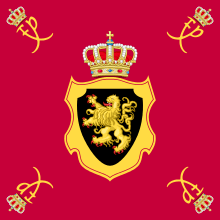
- 15 April 1960 – 9 August 1993: His Royal Highness Prince Philippe of Belgium
- 9 August 1993 – 21 July 2013: His Royal Highness The Duke of Brabant
- 21 July 2013 – present: His Majesty The King of the Belgians
National honours
| Ribbon bar | Honour | Date |
|---|---|---|
| Grand Master of the Order of Leopold | 21 July 2013 | |
| Grand Master of the Order of the African Star | 21 July 2013 | |
| Grand Master of the Royal Order of the Lion | 21 July 2013 | |
| Grand Master of the Order of the Crown | 21 July 2013 | |
| Grand Master of the Order of Leopold II | 21 July 2013 |
Foreign honours
| Ribbon bar | Country | Honour | Date |
|---|---|---|---|
| Austria | Knight of the Order of the Golden Fleece | 29 November 2008[11] | |
| Argentina | Grand Cross of the Order of the Liberator General San Martín | 6 May 1994[11] | |
| Bolivia | Grand Cross of the Order of the Condor of the Andes | 9 September 1996[11] | |
| Denmark | Knight of the Order of the Elephant | 28 May 2002[11][12] | |
| Finland | Grand Cross of the Order of the White Rose | 30 March 2004[11] | |
| France | Grand Cross of the Order of the Legion of Honour | 6 February 2014 | |
| Germany | Grand Cross Special Class of the Order of Merit of Germany | 6 March 2016 | |
| Greece | Grand Cross of the Order of Honour | 1 February 2005[11] | |
| Hungary | Grand Cross of the Order of Merit of the Republic of Hungary | 18 April 2008[11] | |
| Japan | Grand Cordon with Collar of the Order of the Chrysanthemum | 9 October 2016 | |
| Jordan | Grand Cordon with Collar of the Order of al-Hussein bin Ali | 18 May 2016 | |
| Luxembourg | Knight of the Order of the Gold Lion of the House of Nassau | 15 March 1999[11] | |
| Netherlands | Knight Grand Cross of the Order of the Netherlands Lion | 28 November 2016 | |
| Netherlands | Knight Grand Cross of the Order of Orange-Nassau | 6 May 1993[11] | |
| Netherlands | Recipient of the King Willem-Alexander Inauguration Medal | 30 April 2013 | |
| Norway | Grand Cross of the Order of St. Olav | 20 May 2003[11] | |
| Poland | Knight of the Order of the White Eagle | 13 October 2015 | |
| Poland | Grand Cross of the Order of Merit of the Republic of Poland | 18 October 2004[11] | |
| Portugal | Grand Cross of the Order of Christ | 18 October 2005[11] | |
| Portugal | Grand Cross of the Order of Aviz | 18 September 1997 | |
| Portugal | Grand Collar of the Order of Prince Henry | 22 October 2018 | |
| Spain | Knight Grand Cross of the Order of Isabella the Catholic | 16 May 2000[11] | |
| Sweden | Knight of the Royal Order of the Seraphim | 7 May 2001[11] | |
| Sweden | Recipient of the 50th Birthday Badge Medal of King Carl XVI Gustaf | 30 April 1996 | |
| Sweden | Recipient of the 70th Birthday Badge Medal of King Carl XVI Gustaf | 30 April 2016 | |
| Turkey | Member of the Order of the State of Republic of Turkey | 4 October 2015 | |
| Vatican City | Knight Grand Cross of the Order of the Holy Sepulchre | 19 October 1995[11] |
Arms
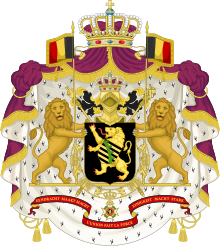 |
|
Ancestry
| Ancestors of Philippe of Belgium | |||||||||||||||||||||||||||||||||||||||||||||||||||||||||||||||||||||||||||||||||||||||||||||||||||||||||||||||||||||||||||||||||||||||||||||||||||||||||||||||||||||||||||||||||||||||||||||||||||||||||||||||||||||||||||||||||||||||||||||||||||||||||||||||||||||||||||||||||||||||||
|---|---|---|---|---|---|---|---|---|---|---|---|---|---|---|---|---|---|---|---|---|---|---|---|---|---|---|---|---|---|---|---|---|---|---|---|---|---|---|---|---|---|---|---|---|---|---|---|---|---|---|---|---|---|---|---|---|---|---|---|---|---|---|---|---|---|---|---|---|---|---|---|---|---|---|---|---|---|---|---|---|---|---|---|---|---|---|---|---|---|---|---|---|---|---|---|---|---|---|---|---|---|---|---|---|---|---|---|---|---|---|---|---|---|---|---|---|---|---|---|---|---|---|---|---|---|---|---|---|---|---|---|---|---|---|---|---|---|---|---|---|---|---|---|---|---|---|---|---|---|---|---|---|---|---|---|---|---|---|---|---|---|---|---|---|---|---|---|---|---|---|---|---|---|---|---|---|---|---|---|---|---|---|---|---|---|---|---|---|---|---|---|---|---|---|---|---|---|---|---|---|---|---|---|---|---|---|---|---|---|---|---|---|---|---|---|---|---|---|---|---|---|---|---|---|---|---|---|---|---|---|---|---|---|---|---|---|---|---|---|---|---|---|---|---|---|---|---|---|---|---|---|---|---|---|---|---|---|---|---|---|---|---|---|---|---|---|---|---|---|---|---|---|---|---|---|---|---|---|---|---|---|
| |||||||||||||||||||||||||||||||||||||||||||||||||||||||||||||||||||||||||||||||||||||||||||||||||||||||||||||||||||||||||||||||||||||||||||||||||||||||||||||||||||||||||||||||||||||||||||||||||||||||||||||||||||||||||||||||||||||||||||||||||||||||||||||||||||||||||||||||||||||||||
See also
- Line of succession to the Belgian throne
- Prince Philippe Fund
Notes
- Alternatively Filip in Dutch, and Philipp in German
References
- J.M. (8 May 2001). "Le baptême en l'église royale..." dh.be (in French). Retrieved 11 December 2015.
- "Prince Philippe : la ligne du temps d'une vie passée devant les caméras". RTBF.be (in French). Retrieved 11 December 2015.
- "The Belgian Monarchy". Retrieved 22 July 2016.
- "The Belgian Monarchy". Retrieved 22 July 2016.
- Agence pour le Commerce extérieur, Missions antérieures Archived 10 February 2015 at the Wayback Machine
- "Official Royal Website Archives". Monarchie.be. Archived from the original on 18 July 2013. Retrieved 22 July 2013.
- Price, Matthew (3 July 2013). "Belgium's King Albert II announces abdication". BBC News. Retrieved 3 July 2013.
- "Belgium's King Albert II gives up throne to son". CNN. 21 July 2013. Retrieved 21 July 2013.
- Moens, Barbara; Gijs, Camille (6 July 2020). "Of race and royalty: How the king surprised Belgium". Politico.
- The Associated Press (29 May 2019). "Belgian far-right leader in landmark audience with the king". The Public's Radio.
- "Biographies of Members of the Belgian Senate" (PDF). Belgian Senate. Retrieved 20 November 2018.
- "Modtagere af danske dekorationer". kongehuset.dk (in Danish). Retrieved 5 May 2019.
- "Le Moniteur belge". www.ejustice.just.fgov.be. Retrieved 23 July 2019.
- "Royal Decree of July 12, 2019". Moniteur Belge. 19 July 2019. Retrieved 23 July 2019.
- Philippe, Koning der Belgen (12 July 2019). "Koninklijk besluit houdende vaststelling van het wapen van het Koninklijk Huis en van zijn leden" (PDF). MONITEUR BELGE/ BELGISCH STAATSBLAD. Retrieved 24 July 2019.
- "Belgian royal coat of arms gets a 'modern' update". Brussel Times. 1 August 2019. Retrieved 2 August 2019.
External links
| Wikiquote has quotations related to: Philippe of Belgium |
| Wikimedia Commons has media related to Philippe of Belgium. |
- Official biography from the Belgian Royal Family website
- DHnet Article (French) about Prince Philippe's education and military career.
Philippe of Belgium Born: 15 April 1960 | ||
| Regnal titles | ||
|---|---|---|
| Preceded by Albert II |
King of the Belgians 2013–present |
Incumbent Heir apparent: Elisabeth |
| Belgian royalty | ||
| Vacant Title last held by Baudouin |
Duke of Brabant 1993–2013 |
Succeeded by Elisabeth |
